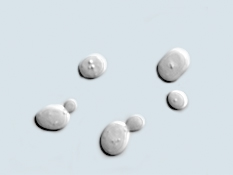Unraveling substrate dynamics and identifying inhibitors in hydrolysates of lignocellulosic biomass by exometabolomics
Lignocellulosic biomass is the 2nd generation feedstock for biofuel production through fermentation processes. The material has a rigid structure, which needs to be broken down by a pretreatment procedure to expose cellulose for hydrolysis. The hydrolysis products, so called biomass hydrolysates, contain next to the sugar monomers, toxic compounds released and formed during the pretreatment process. These compounds inhibit the growth of the fermenting host(s). To improve the fermentability of biomass hydrolysates, identification of these inhibitory compounds is of great importance.

